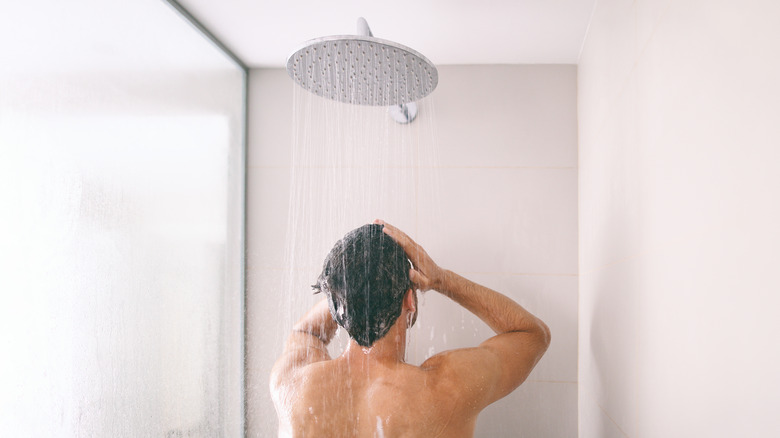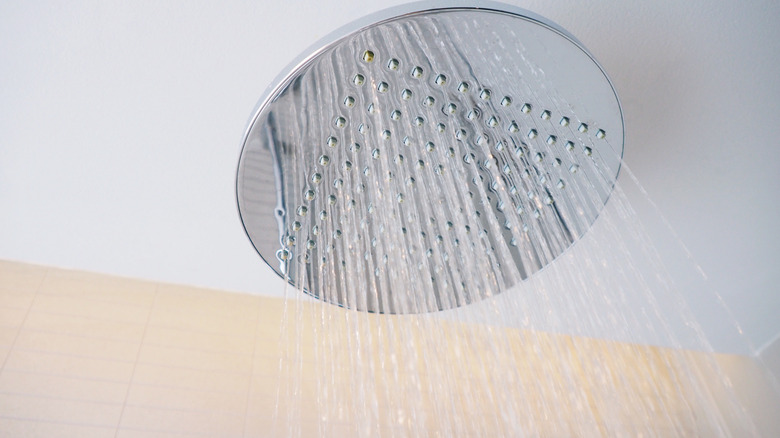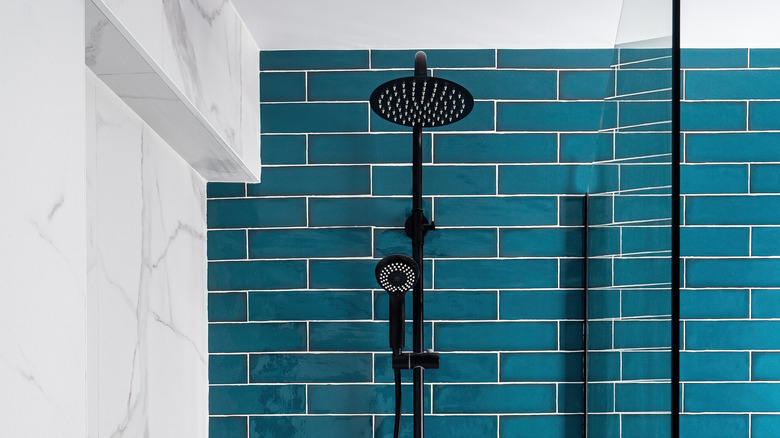What To Consider Before Installing A Rain Shower
After a long day, a hot shower can be just what you need to relax and unwind. If you want to up the ante so the experience feels more like a luxury spa, you may consider installing a rain shower head. These features are loved by designers because they give the standard bathroom a more elevated feel. Rain shower heads tend to be larger and wider in diameter than the typical shower head, notes Flow Bath and Kitchen Design Studio, usually about 6 to 12 inches wide. The extended width combines with a flat head to create a water stream that's softer, which many find more relaxing than a normal shower head.
Another defining feature is that rain shower heads are positioned from above in order to stream water directly downwards rather than sending water outwards from the wall. Homeowners that opt to get rid of their regular shower head prefer the rain type for how the stream of water envelops the entire body. And while there are still other benefits, there are a few considerations to make before installing one yourself.
Potential plumbing upgrades
The main feature of a rain shower head is that the water comes from above. In many cases, that means installing the shower head on the ceiling. A ceiling installation allows for a sleek and modern look, and it's also more practical. Rain shower heads tend to be too heavy to be installed on the wall, and the arm that would be required to get it far enough away from the wall would be too long, explains Plumbing Supply. If you're planning to swap from a normal shower head, know in advance that it may require a larger bathroom renovation because you'll have to remove existing walls and run new plumbing lines to the ceiling.
This isn't your only option, though. Because of the popularity of rain shower heads, some companies have created wall-mounted units. Though these prevent the need for major renovations, they come with their own complications. First, you want to ensure that the shower head is installed where it will be higher than the tallest user. A wall-mounted unit will also affect where you stand. The arm can only be so long, so you may have to stand farther forward to be under the flow of water. The heads can be tilted at a 45 degree angle when necessary, but in that position they won't offer the straight downward stream you're expecting, but rather a drooping arc that will still require a step forward.
Water pressure can affect the rain stream
No one likes a weak shower stream, so if your bathroom is prone to low water pressure, you may want to reconsider a rain shower head altogether, or at least be cautious regarding the kind you get. Larger rain shower heads, such as those exceeding 10 inches wide, will make the water come out as a trickle rather than a relaxing rainfall if you have low water pressure, warns Mission West Kitchen and Bath. Opting instead for a smaller shower head, around 6 inches wide, should help abate the issue.
Of course, you can also address the underlying reasons for low water pressure like a faulty regulator, leaking pipes, or a closed valve, suggests Pratt Plumbing. There are also rain shower heads that don't rely on water pressure, which may be the best option for a low pressure bathroom. Models made by Gerber, for example, inject air to help push the water through the nozzles rather than the water pressure itself like in most traditional bathrooms. Either way, it would be a good idea to check for any leaks that may be affecting your water pressure.


